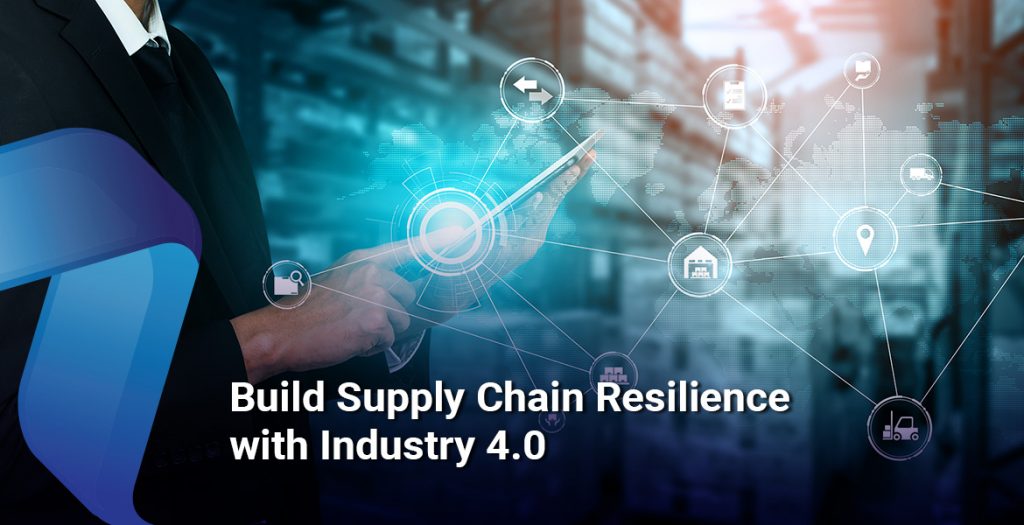As the global business environment continues to be disrupted, digitalization is the solution to enhance and support supply chains’ future state and success.
However, companies are looking to simplify their supply chains after being under constant stress to navigate through the disruptions. Enterprises today are looking to enhance supply chain resilience by upgrading their infrastructure with advanced technologies.
Disruption is here and apparently with some long-term goals
Technology is changing every aspect of the industry rapidly, allowing supply chains to adapt quickly to new challenges., Disruption has become the ‘New Normal’, and it is increasingly affecting supply chains. What’s more, the size and frequency of these disruptions have grown in recent years due to globalization, geopolitical and climate change challenges.
Enterprises will need to capitalize on tech disruption to adapt to shifting demands. While manufacturers have suffered due to the supply chain disruption, online retailers such as Amazon have reaped the benefits. Many organizations modernized their business models seeing ‘the shift online’ stay afloat.
Prioritize Supply Chain Investment
Resilient and adaptable supply chains are essential in recovery, especially in global disturbances. Since they have a significant impact on multinational enterprises and CSR, supply chains are now more than ever a part of crucial agendas. Old assumptions, like prioritizing cost reduction, are becoming less significant in supply chain modeling and optimization.
Mitigating risks is a top priority for businesses. Suppliers received a wide berth until the recent past, while supply chain innovations lacked due precedence as they were not considered vital for profit and growth. Today, the focus is on investment to reduce risk and build resilience to recover quickly and recoup profits. COVID-19 has sparked a greater understanding among businesses of the scale and relevance of investing in a supply chain. Even though costs may soar, so may the chances of a company’s subsistence.
When done correctly, with the right degree of investment, a solid plan, and procedures in place, resilient supply chains can become a source of competitive advantage, opening new and exciting marketplaces and profit segments.
Supply Chain for Industry 4.0 that is digital, agile, connected, responsive, and able to recover quickly
Companies that invest proactively in supply chain resilience often lower risk exposure. However, establishing stability requires careful planning, as resilient supply chains have five elements: agility, digitalization, connectedness, intelligence, and the ability to recover quickly.
A flexible ecosystem of suppliers and partners makes up an agile supply chain network, where commodities can be switched, and a dual or triple sourcing strategy is used. Smaller, more nimble manufacturing sites are more agile and adaptable to challenges and change as per companies’ transferring capacity.
Industry 4.0 connectivity and digital transformation result in more flexible operations that are better equipped to respond to and recover from interruptions. Warehouses and production lines can be entirely automated. Autonomous cars can be employed for short-distance deliveries. These and other technologies, particularly those based on digitization and the IoT, allow supply chains to become more flexible.
Business leaders have realized that they can remotely run aspects of the supply chain with digital solutions. Enhanced digital capabilities ensure:
- Real-time information to facilitate better decisions and innovation
- supply chain transparency and visibility Using virtual control towers to monitor
- Adoption of omnichannel or e-commerce fulfillment and delivery models
- Incorporating automation with AI to build efficient predictive analytics
- Implementation of smart factories to monitor plant operations
According to a recent report on the emergence of Industry 4.0 by PwC, a third of organizations surveyed have already begun to digitize their supply chains, with 72 percent of those who haven’t anticipated doing so in the next five years. Companies with extensively digitized supply chains and operations should expect yearly efficiency benefits of 4.1 percent, as well as a 2.6 percent increase in revenue.
Supply chains are incredibly complicated functions. Many of the essential applications are not commonly used. However, this will drastically change over the next few years, with different industries using digital supply chains at varying rates. Companies that arrive first will have an unbeatable edge in the race to Industry 4.0 and will be able to set, or at least influence, technical standards for their respective industries. The benefit will not be confined to increased efficiencies alone. The true goal will be to take advantage of numerous new business models and revenue streams that the digitized supply chain will support.













